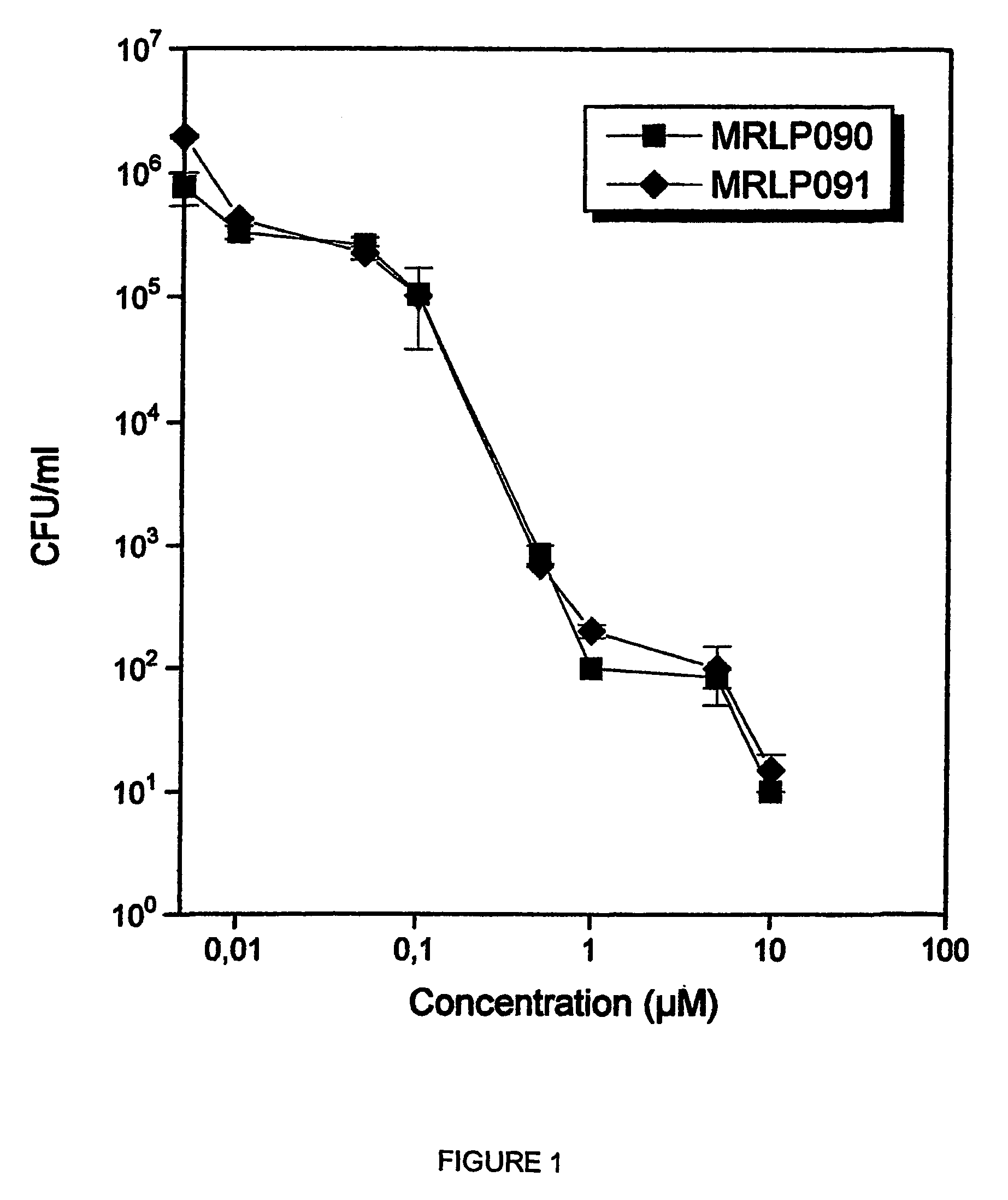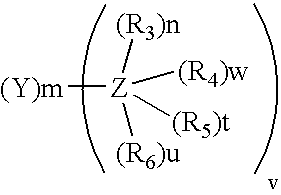Metal substituted non-centrosimmetrical phthalocyanine analogues, their preparation and use in photodynamic therapy and in vivo diagnostic
a technology of phthalocyanine and metal substitute, which is applied in the field of non-centrosimmetrical mephthalocyanine analogues, can solve the problems of uncontrolled protein polymerization, limited practical application of photosensitizers, and phototoxicity after light exposur
- Summary
- Abstract
- Description
- Claims
- Application Information
AI Technical Summary
Benefits of technology
Problems solved by technology
Method used
Image
Examples
example 1
[0068]2-[(4-hydroxycarbonyl)phenoxy]-{[9,10][16,17][23,24]-tribenzo}zinc(II)phthalo cyanine. C51H26N8O3Zn; green-blue solid; UV-vis (DMF) λmax 746, 725, 339;ESI-MS, m / z 863 [M+H]+.
example 2
[0069]2-[(4-hydroxycarbonyl)phenoxy]-9(10),16(17),23(24)-tri[2-(morfolin-1-yl) ethoxy]zinc(II) phthalocyanine. C57H53N11O9Zn; green-blue solid; UV-vis (DMF) λmax 678, 611, 358, 276; 1H-NMR (DMSOd6), δ 9.5–9.3 (m, 1H), 9.3–9.0 (m, 4H), 9.0–8.8 (m, 3H), 8.2–8.0 (m, 2H), 7.8–7.6 (m, 4H), 7.5–7.3 (m, 2H), 4.8–4.5 (m, 6H), 3.85–3.65 (m, 12H), 3.1–2.9 (m, 6H), 2.8–2.6 (m, 12H); ESI-MS m / z 1100.6 [M+H]+, 987.6 [M+C6H13NO]+.
example 3
[0070]2-[(4-hydroxycarbonyl)phenoxy]-2(3),9(10),16(17),23(24)-tri[2 -(piperidin-1-yl) ethoxy] zinc(II)phthalocyanine. C60H59N11O6Zn; UV-vis (DMF) λmax, (ε, M−1 cm−1) 678 (1.308×105), 612, 355; 1H NMR (DMSO-d6) δ 9.55–8.60 (m, 10 H), 8.00–7.55 (m, 6 H), 4.95–4.35 (m, 6 H), 3.10–2.80 (m, 6 H), 2.80–2.35 (m, 12 H), 1.85–1.35 (m, 18 H); ESI-MS m / z 1094.7 [M+H]+.
PUM
| Property | Measurement | Unit |
|---|---|---|
| wavelength | aaaaa | aaaaa |
| wavelengths | aaaaa | aaaaa |
| pH | aaaaa | aaaaa |
Abstract
Description
Claims
Application Information
 Login to View More
Login to View More - R&D
- Intellectual Property
- Life Sciences
- Materials
- Tech Scout
- Unparalleled Data Quality
- Higher Quality Content
- 60% Fewer Hallucinations
Browse by: Latest US Patents, China's latest patents, Technical Efficacy Thesaurus, Application Domain, Technology Topic, Popular Technical Reports.
© 2025 PatSnap. All rights reserved.Legal|Privacy policy|Modern Slavery Act Transparency Statement|Sitemap|About US| Contact US: help@patsnap.com



